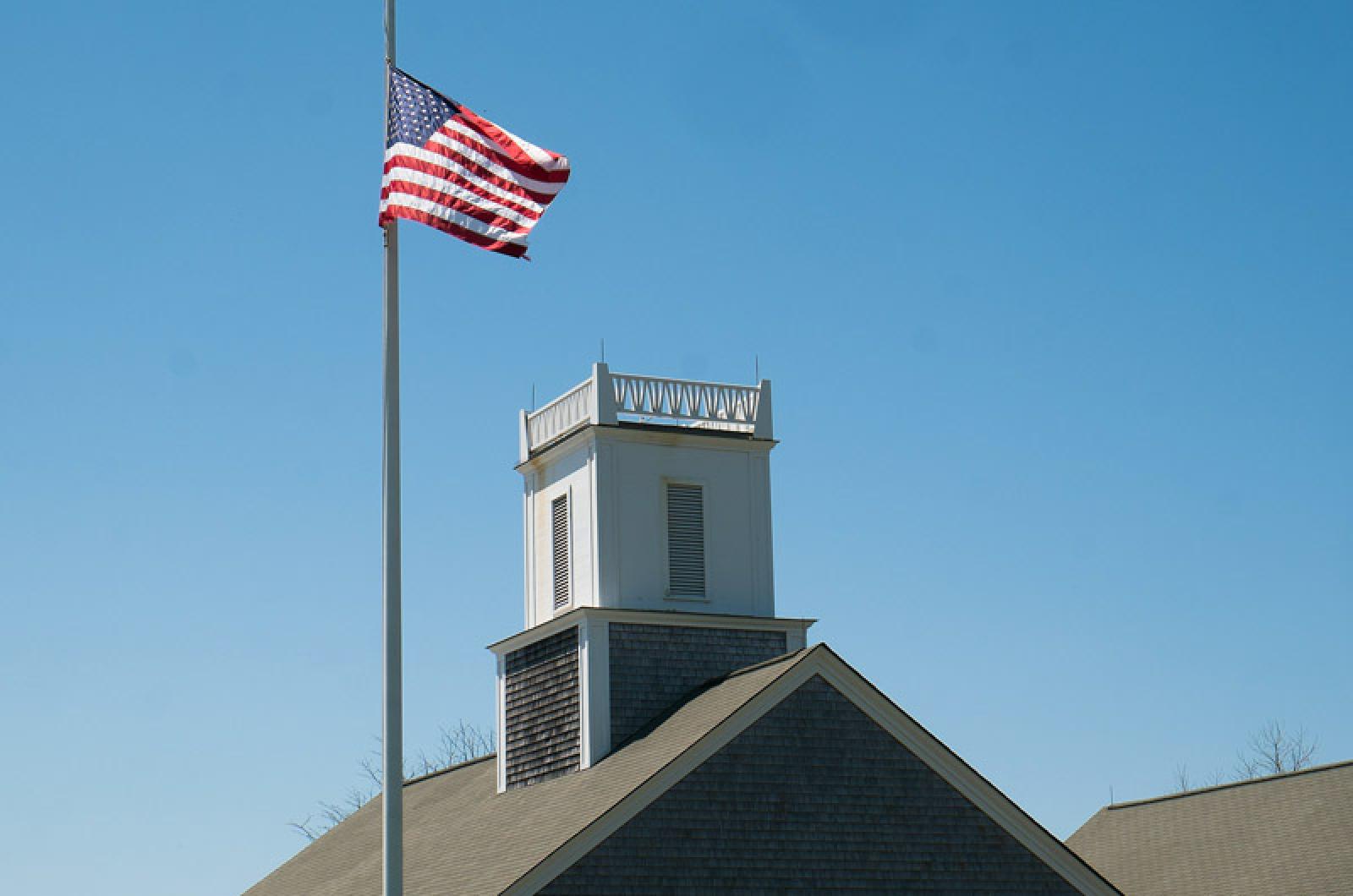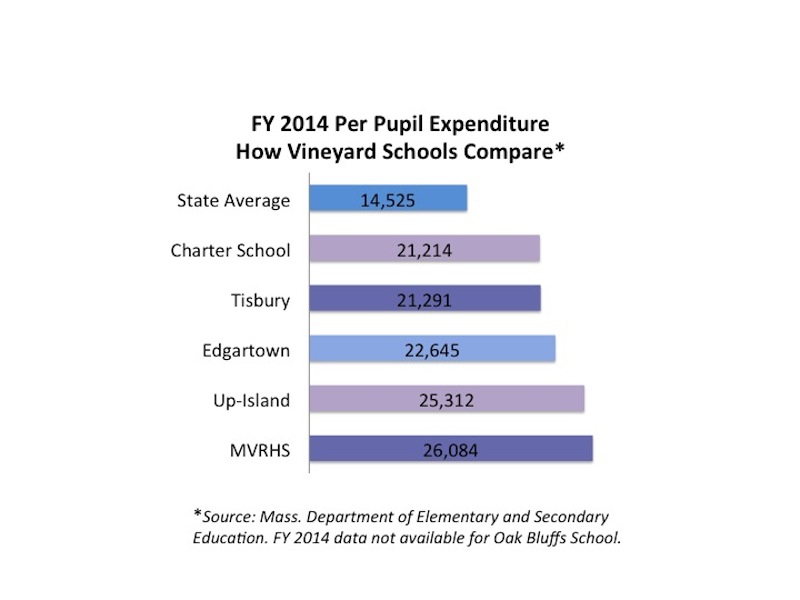With a decision looming on the West Tisbury education budget, voters in that town are taking a hard look at what it costs to educate their schoolchildren. On Tuesday, voters will convene at a special town meeting at 7 p.m. at the West Tisbury School gymnasium. It will mark the second attempt to approve funding for the regional school district it shares with Chilmark and Aquinnah, following a failed Proposition 2 1/2 override question for an additional $300,000 at the annual town meeting in April. Since then, school officials have worked to trim fat from the budget, and last week they agreed on a revised $10.3 million budget to take to voters on Tuesday.
The up-Island school district has long paid top dollar to educate its students, statistics show.
According to the most recent data available, which describes the 2013-2014 school year, the up-Island school district ranked sixth in per-pupil spending among other districts in the state. The district, which includes the West Tisbury and Chilmark schools, paid $25,311.68 per student, according to the numbers provided by the state Department of Education.
The state average for per-pupil spending that year was $14,525.
And Vineyard schooling in general is not cheap.
In 2014, the regional high school ranked fourth in the state in per-pupil spending, at $26,083 per student. The Edgartown School was ranked 14th in per-pupil spending at $22,645, and the Tisbury School was 22nd at $21,291. Data for Oak Bluffs was submitted to the state behind schedule and are not yet available. The Martha’s Vineyard Public Charter School, which is not counted among traditional public schools in state tallies, paid $21,214 per student.
In a conversation with the Gazette this week, Vineyard schools superintendent Dr. James H. Weiss attributed the high costs of schooling to two general factors. First, he said Vineyard educators are paid more due to the high cost of living on the Island. Because of that high cost of living, Vineyard schools tend to attract teachers who earn at the higher end of the pay scale, while those who earn less are less likely to make the expensive move to the Island.
“People who come here either don’t last because they can’t afford to stay here, or they stay here forever and become highly paid individuals,” Mr. Weiss said. Even with that, he said teachers are not compensated enough to afford the high housing costs on the Island.
The other factor affecting high schooling costs is class size, which on the Vineyard tends to be smaller than other districts. Mr. Weiss said small class sizes have been a Vineyard tradition for many years. “School districts on the Island have chosen to have smaller classes because they believe it is important to the education of their students,” he said.
Another less significant factor, he said, is the slightly higher percentage of Vineyard students who have identified learning disabilities. Statewide, an average of 14 to 15 per cent of students are identified as special needs, while on the Vineyard the number is closer to 18 or 19 per cent, he said. It costs more to provide special needs services.
In addition, the Vineyard provides many extracurricular opportunities for kids, including athletics, music, and arts, enrichment programs which have been eliminated in other school districts. “We have a very broad, rich curriculum here,” Mr. Weiss said.
Jeff Wulfson, the deputy state commissioner for education, also cited the so-called Island factor as a reason why education costs might be high.“Costs are high on the Islands and that translates into higher transportation costs, shipping costs, heating costs and living costs,” he said. “You may have to pay teachers more money to attract the workforce.” He added that there may be higher aspirations on the Vineyard in terms of additional programs and resources than some communities.
As for whether all this extra spending means students are better educated in the Vineyard schools than their counterparts across the state, Mr. Wulfson said not necessarily. He said there has been little research showing that if all other factors remained constant, spending more on schools necessarily brings better academic outcomes.
“All things being equal, in most of the research over last 34 years, there has been no evidence that just spending more money creates better schools or higher achievement in schools,” Mr. Wulfson said. “It’s not an easy comparison. It is possible to spend a lot of money and not get good results.” The more important issue is how the money is spent. “The total amount per student is probably of less interest than the breakdown in the different [spending ]categories,” he said.
Meanwhile, the topic of per-pupil spending surfaced this week at the West Tisbury selectmen’s meeting. Selectman and school committee member Jeffrey (Skipper) Manter 3rd sought to distinguish between the state’s per-pupil calculation and what the town actually pays. Mr. Manter claims it will cost the town on average $32,396 per student to educate the 197 students at the West Tisbury School next year. (That figure does not include revenue, estimated at $1,954 per student, and debt service, he said.)
“I think as we go forward, especially in the next year, we need to stay focused on the school spending — the amount of money we are paying,” Mr. Manter said.
On the whole, Mr. Weiss, who will retire in a few weeks and recently conducted a speaking tour in Island towns, was unapologetic about the resources the community devotes to education. While he’d like to spend less, he said it’s important to look at the factors that drive spending. After all, he said the school system is one large company that employs 550 people and serves 2,122 students. “This is what it is,” he said. “This is what it takes to maintain it.”
Alex Elvin contributed reporting.






Comments (12)
Comments
Comment policy »